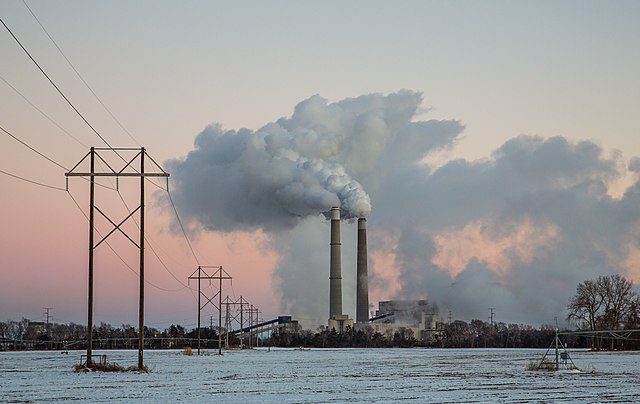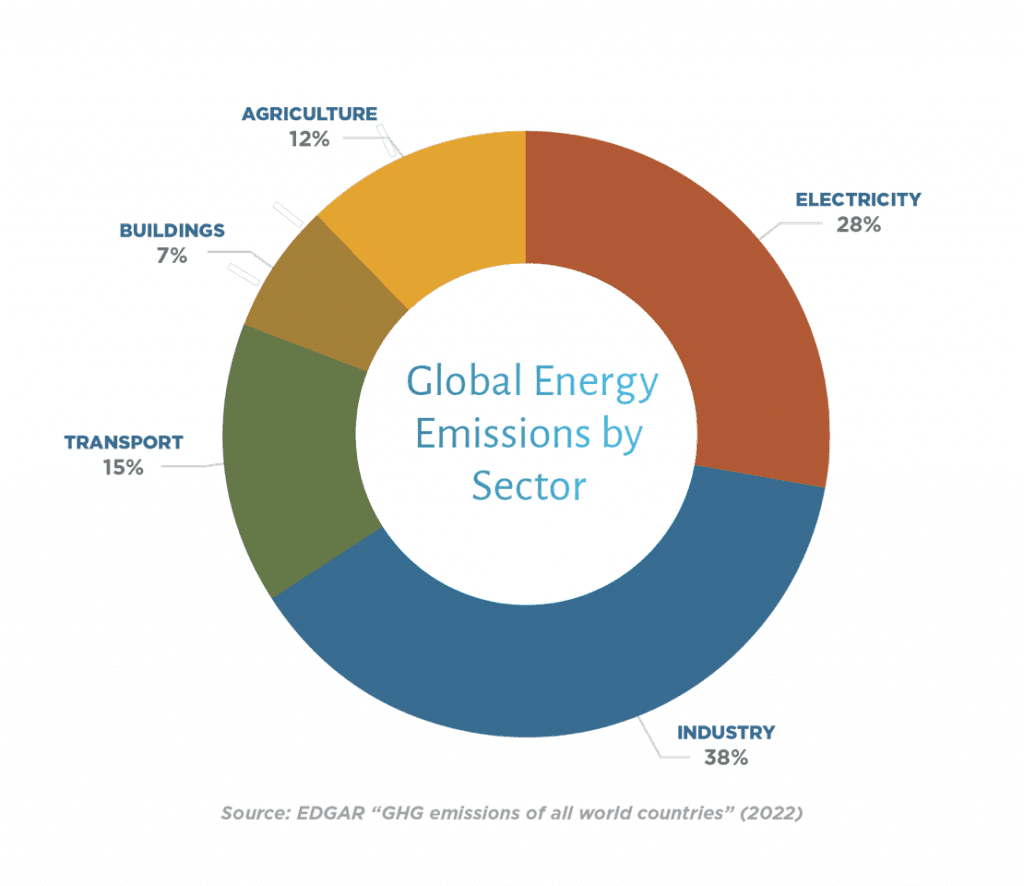Since the Industrial Revolution, we’ve increasingly relied on fossil fuels, like coal and oil, to produce energy. While this energy revolution fueled rapid economic development in some countries, it also resulted in a 50 percent increase in greenhouse gases (GHGs) in the Earth’s atmosphere—the cause of our present global climate crisis.

The more heat-trapping gases in the atmosphere, the warmer the Earth’s surface temperature becomes—and even small temperature changes can have enormous effects on the Earth’s climate, as evidenced by the rapid increase in extreme weather events around the world.
The good news is that advances in solar, wind, and battery technologies mean that using polluting fossil fuels is no longer necessary to support high standards of living.
Smart public policies can encourage the rapid buildout of clean energy, create jobs and grow economies without endangering the planet. But to design policies that can reduce pollution, we must first understand where these emissions come from.
Global emissions by sector

Global emissions come predominantly from electricity generation, industry, transport, and buildings. Combined, these sectors account for almost 90 percent of total GHG emissions. Energy use within these sectors is by far the largest source of emissions. Currently, about 82 percent of all global energy—including electricity, heat, and mechanical energy—is still generated by burning fossil fuels.
Industry emissions
Most industry emissions come from on-site combustion of fossil fuels to generate heat for heavy industries like steel or iron, followed by emissions from heat for lighter manufacturing such as food and beverage processing. About a quarter of industrial emissions are directly released during chemical processes used to manufacture certain products such as fertilizers, cement, or glass. These are called process emissions. Emissions resulting from electricity use in the industry sector are attributed to the electricity sector.
Transportation emissions
Transportation emissions arise from burning fossil fuels to power vehicles. About three-quarters of these emissions come from on-road transport such as cars and trucks, while the remainder come from trains, shipping, and aviation. Emissions created by generating electricity for electric vehicles are attributed to the electricity sector.
Buildings emissions
Emissions from commercial and residential buildings are generated in large part by the combustion of fossil fuels, such as natural gas, for space and water heating, as well as for appliances like gas stoves and clothes dryers. Other emissions result from leaking coolants used for air conditioning and refrigeration. Emissions resulting from electricity use in the buildings sector are attributed to the electricity sector.
Electricity emissions
About two-thirds of the world’s electricity is still generated using fossil fuels. Coal, the dirtiest form of energy both in terms of GHG emissions and toxic air pollution, is still the largest source of electricity globally, followed by natural gas. As the industry, transportation, and buildings sectors are increasingly electrified, emissions will shift from those sectors into the electricity sector. The emissions created to satisfy electricity demand for those sectors will depend on how much electricity demand can be met with clean resources.
Agriculture and land use
Agriculture and land use emissions come from farming practices such as manure management, fertilizers, field burning, fuel use on farms, and land use changes such as deforestation or afforestation. Agricultural practices typically produce emissions, while land use change such as afforestation can result in negative emissions due to CO2 being absorbed by vegetation.
How to reduce—and eliminate—harmful emissions
Greenhouse gas reduction only happens by changing the physical infrastructure that supports the economy—individual power plants, buildings, vehicles, public transport systems, and factories. No matter what sort of international commitments are made, progress comes down to action on the ground.
These actions are shaped by national and state/provincial policies, as well as with evolving technology. Well-crafted policies can set the pace for a swift, successful clean energy transition. Furthermore, in each of the sectors listed above, just a handful of core policies can make the difference, putting us on track to reach our climate goals.
Fortunately, a focused effort can get most of the job done. Just 20 countries are responsible for 85 percent of global energy emissions. If these countries have downward-trending emissions in the next five to ten years (later for the low-income countries, earlier for high-income), then a livable future is still in reach. Success in these countries also has spillover effects to other markets, cutting pollution and delivering clean energy to billions of people.
Bottom line–the era of fossil fuels is over.
The progress we are now seeing is due to the largest economies in the world adopting policies to promote renewable energy, all-electric buildings, electric vehicles, energy efficiency, and public transportation. With greater ambition and the necessary technical assistance policymakers need to craft effective policies, we can draw down harmful emissions to zero—in time to ensure a livable climate.
